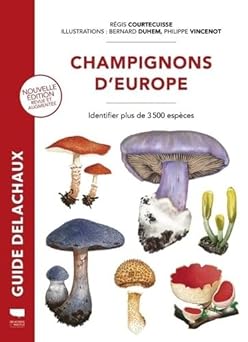
Il y a un seul champignon qui correspond à votre recherche :
| Pseudocolus fusiformis (E. Fischer) Lloyd (1909) |

|
Noms francais : Colus de Schellenberg ; Calmar puant ; Champignon Vajra (サンコタケ) Synonymes : Colus fusiformis E. Fischer (1890), Neue denkschriften der allgemeinen schweizerischen Gesellschaft fur die gesammten naturwissenschaften, 32(2), p. 64 (Basionyme) Colus javanicus Penzig (1899), Annales du Jardin botanique de Buitenzorg, 16(2), p. 160, tab. 21, fig. B, tab. 24, fig. 12-14, tab. 25, fig. 2-3 Colus rothae E. Fischer ex Saccardo (1901), Sylloge fungorum omnium hucusque cognitorum, 19, p. 389 Anthurus trifidus Hariot & Patouillard (1902), Bulletin du Museum national d'histoire naturelle, Paris, 8(2), p. 132 Pseudocolus rothae (E. Fischer ex Saccardo) Lloyd (1907), Mycological writings, 2, the phalloids of australasia, p. 20, fig. 21 Pseudocolus javanicus (Penzig) Lloyd (1907), Mycological writings, 2, mycological notes n° 28, p. 358 Pseudocolus rugulosus Lloyd (1909), Mycological writings, 3, synopsis of the known phalloids, p. 52, fig. 67 Pseudocolus fusiformis (E. Fischer) Lloyd (1909), Mycological writings, 3, synopsis of the known phalloids, p. 53, fig. 68 (nom actuel) Colus schellenbergiae Sumstine (1916), Mycologia, 8(3), p. 183 Pseudocolus jaczewskii Woronow (1918), Izviestiia Kavkazskago Muzeia, 11, p. 196 Pseudocolus schellenbergiae (Sumstine) Johnson (1929), Ohio Biological Survey, 22, p. 338 Anthurus rothae (E. Fischer ex Saccardo) G. Cunningham (1931), Proceedings of the linnean Society of the New South Wales, 56(3), p. 188, tab. 8, fig. 9 Anthurus javanicus (Penzig) G. Cunningham (1931), Proceedings of the linnean Society of the New South Wales, 56(3), p. 186 Pseudocolus javanicus f. schellenbergiae S. Ito & S. Imai (1937), Transactions of the Sapporo natural history Society, 15, p. 3 References : IH2 898 ; IOH p. 516 Groupe : Phalles Classification : Basidiomycota / Agaricomycetes / Phallales / Phallaceae Chapeau/Fructification : Jaune pale au stade d'œuf; gelatineux a l'interieur, avec des rhizomorphes blancs attaches a la base. A maturite, developpe une fructification 2,5-8 cm de hauteur, composee de 3-5 tentacules effiles divergents d'une racine commune. Habitat : Saprophytes, solitaire ou en groupe a la lisiere des bois, ou dans les parcs et jardins; commun dans diverses localites de l'Est Amerique du Nord, Japon, Coree en ete et automne. Spores : 4,5-5,5 x 2-2,5 μm, elliptiques a ovoides, lisses. Comestibilite : Sans interet Commentaires : Le nom japonais fait reference a la ressemblance avec le Vajra, arme du dieu Indra, instrument et symbole du culte hindouiste. |

Pour vous accompagner lors de vos sorties mycologiques, MycoDB vous recommande les guides suivants :

